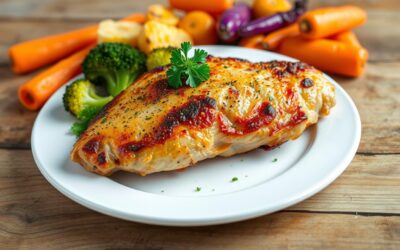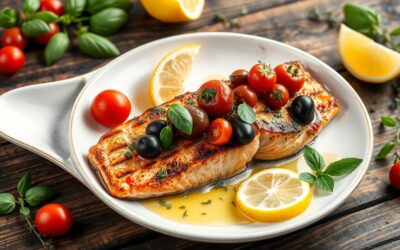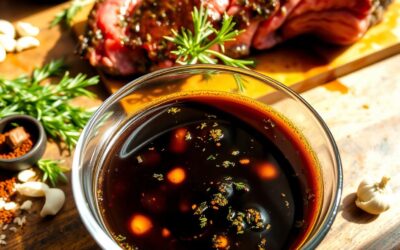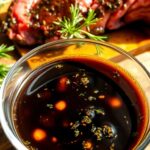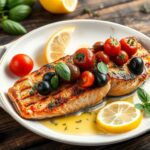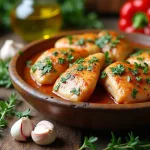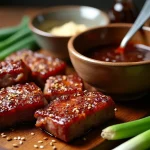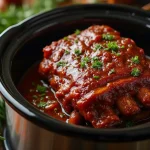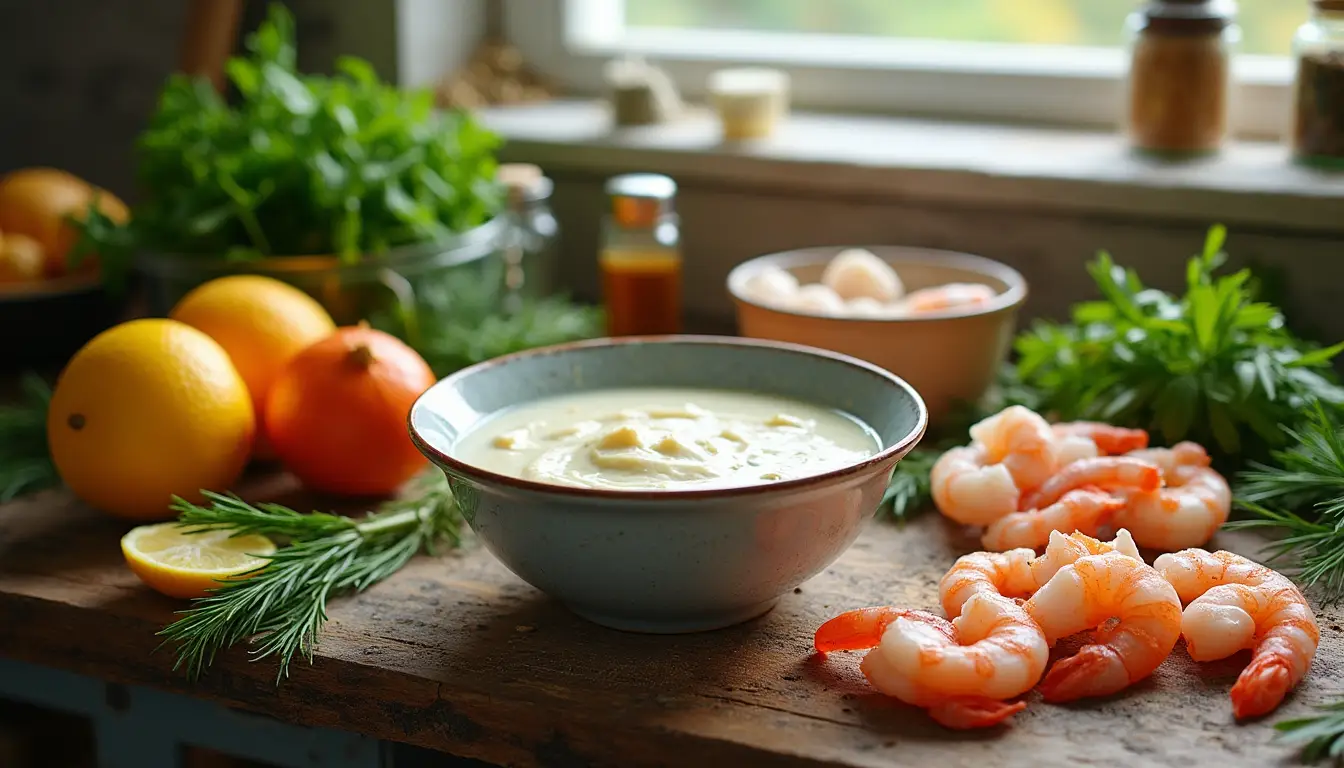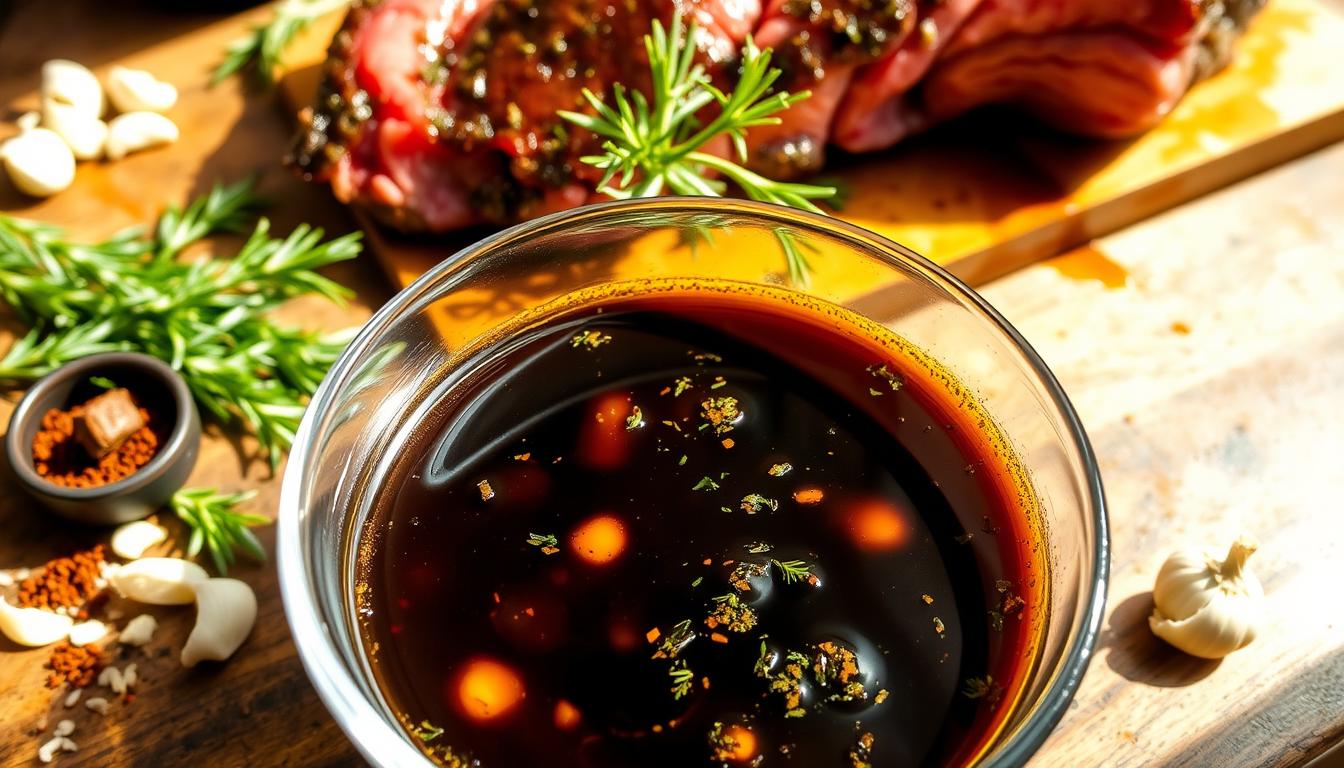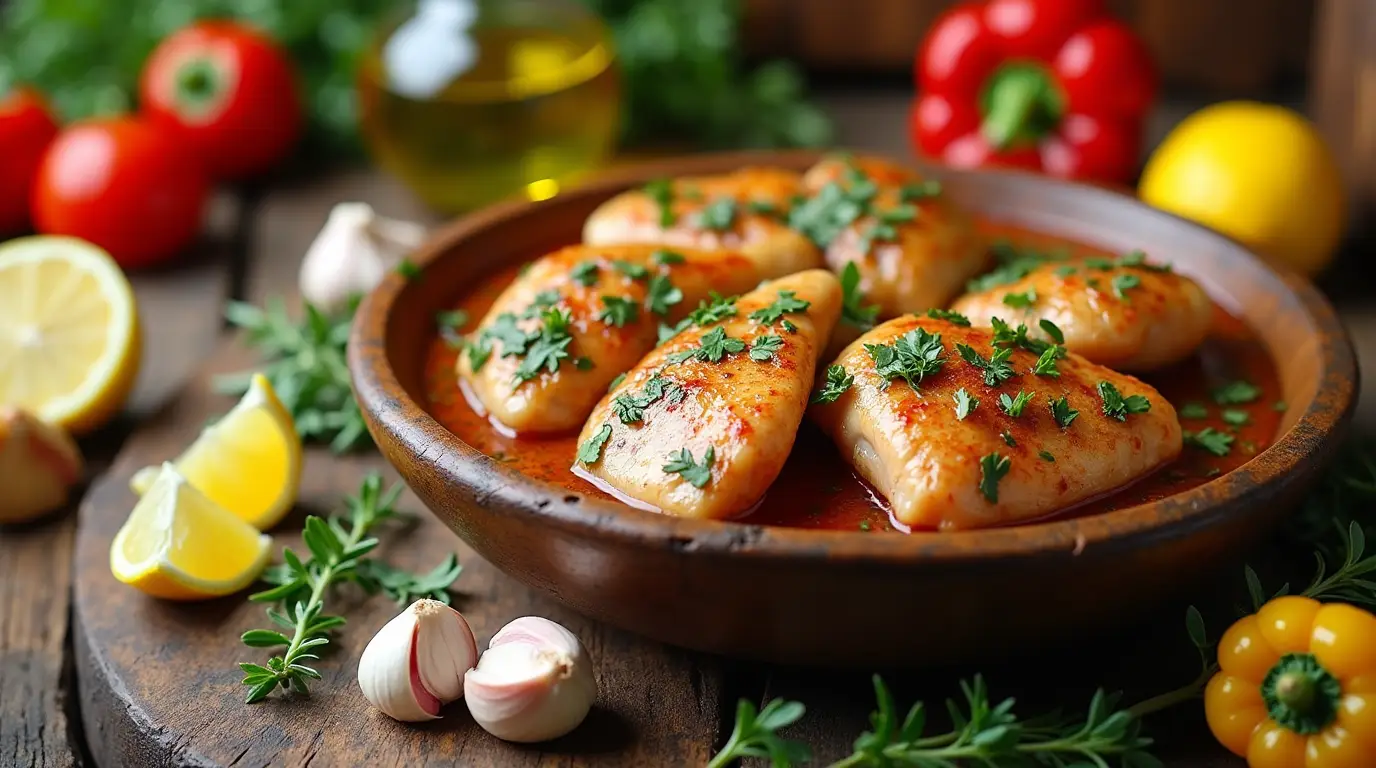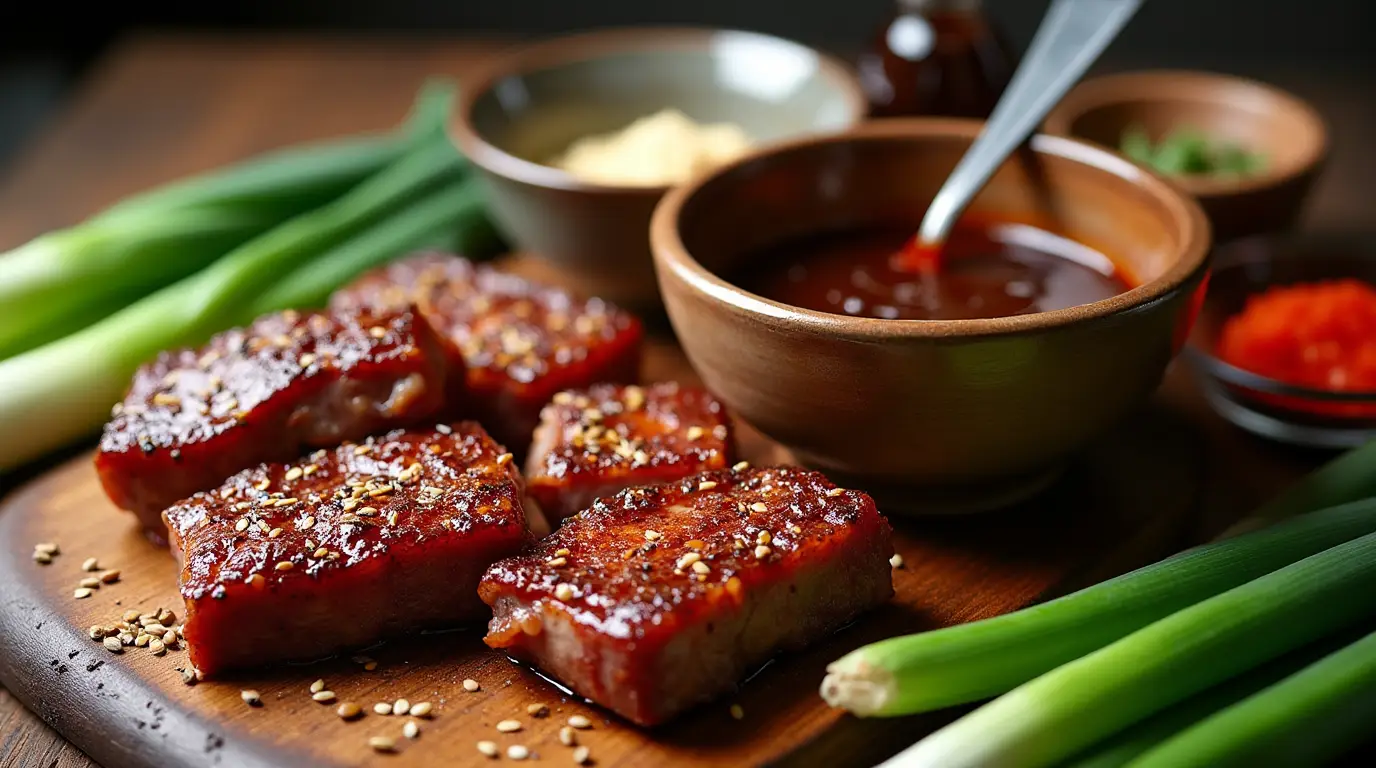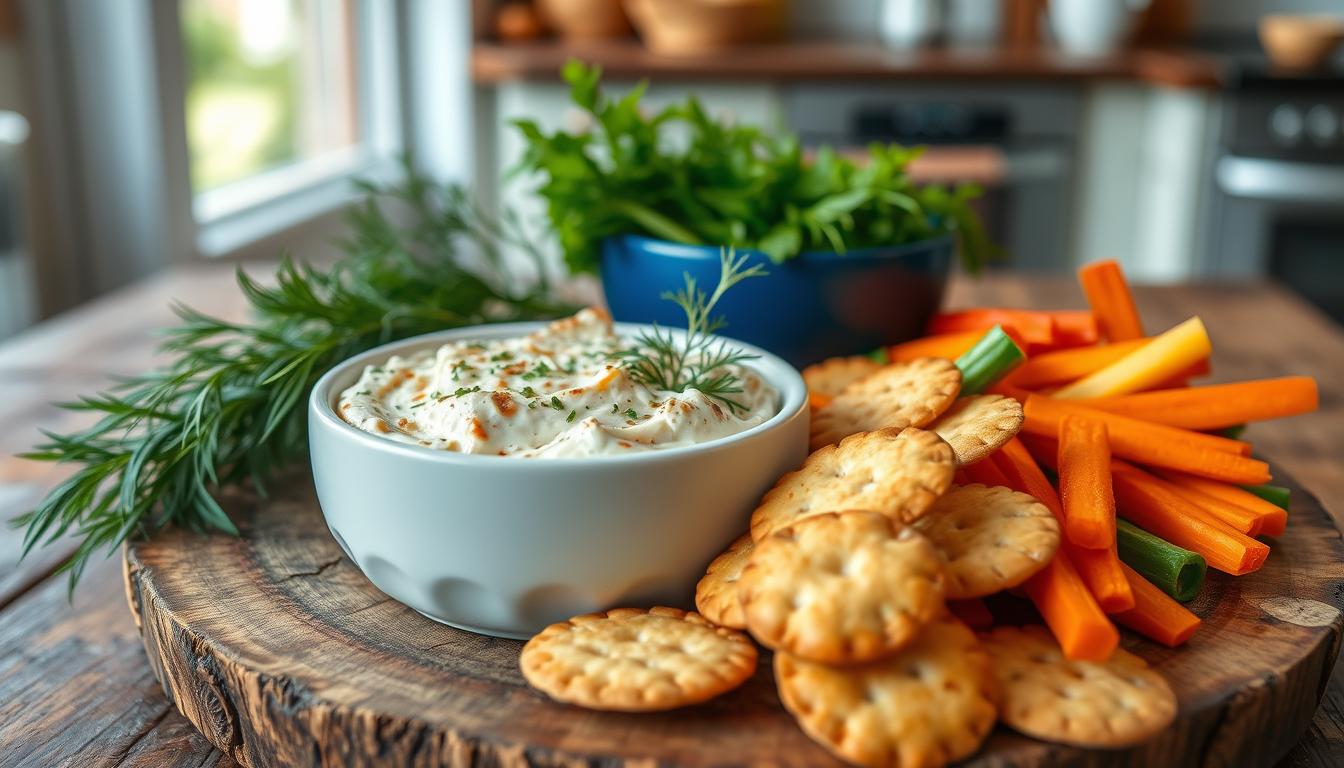Growing up by the Gulf Coast, I learned seafood dressing is more than a recipe. It’s a tradition that brings families together and celebrates coastal Southern cuisine. My grandmother made her famous homemade seafood stuffing every holiday. She turned simple ingredients into a dish that united us all.
This seafood dressing recipe is a true taste of Southern coastal cooking. It mixes fresh seafood, herbs, and rich flavors into something special. Whether it’s for a special dinner or to try authentic Southern cuisine, this recipe will take you to the Gulf Coast’s kitchens.
Table of Contents
Understanding the Coastal Southern Tradition of Seafood Dressing
Seafood dressing is a treasured dish in coastal Southern cuisine. It combines fresh seafood with cooking techniques passed down through generations. This dish is a key part of the Gulf Coast’s culinary heritage.
The tradition of seafood stuffing comes from the rich marine resources along Southern coastlines. Families created unique recipes. These recipes turned simple ingredients into unforgettable dishes.
Origins of Seafood Dressing
Seafood dressing started in coastal areas where fresh seafood was abundant. It evolved from cornbread dressing, adding shrimp and crab for a Southern twist.
- Rooted in Louisiana and Gulf Coast cooking styles
- Influenced by Cajun and Creole culinary traditions
- Developed as a holiday meal staple
Regional Variations and Influences
Seafood dressing varies by region in the Southern United States. Each coastal community adds its own special touch to this beloved dish.
| Region | Signature Seafood | Distinctive Ingredient |
|---|---|---|
| Louisiana | Crawfish | Cayenne Pepper |
| Gulf Coast | Shrimp | Old Bay Seasoning |
| South Carolina | Blue Crab | Mustard-based Seasoning |
Why This Recipe Stands Out
This seafood dressing recipe is special because of its careful preparation and authentic ingredients. Fresh seafood, homemade cornbread, and a blend of herbs and spices make it stand out.
“A true taste of Southern coastal tradition in every bite” – Southern Cooking Magazine
This recipe has a rating of 4.49 out of 5 from 29 votes. It captures the essence of Southern culinary excellence. The mix of flavors and textures celebrates the coastal South’s maritime heritage.
Essential Ingredients for Your Seafood Dressing Recipe
Making the perfect seafood dressing starts with top-notch ingredients. You’ll want to pick fresh seafood to stuff your dish. This choice will make your dish stand out.
A great seafood dressing needs a solid cornbread base. This base adds a rich, textured feel to the dish. It’s the perfect foundation for the seafood.
Key Seafood Components
- Fresh Seafood Selection
- Dungeness or lump crab meat
- Raw shrimp
- Optional: fresh oysters
“The secret to an outstanding seafood dressing lies in the quality of your ingredients.” – Southern Coastal Cooking Tradition
Essential Dry Ingredients
- Self-rising flour
- Cornmeal
- Seasoned stuffing mix
Let’s look at the nutritional benefits of your ingredients. Shrimp and crab are packed with omega-3s, giving you about 11g of protein per serving. The cornbread adds important vitamins like 9% of Vitamin A and 8% of Vitamin C.
Flavor Enhancers
- Old Bay seasoning
- Smoked paprika
- Fresh herbs (green onion, tarragon, parsley)
Pro tip: Let your cornbread dry out for at least 8 hours. This prevents it from getting soggy. It makes sure your dressing has a perfect, crumbly texture that soaks up all the flavors.
Preparing the Perfect Cornbread Base
Starting with a great cornbread is key to a top-notch seafood dressing. Your homemade cornbread adds depth and a true Southern touch. The right cornbread can make your dish unforgettable.
Homemade vs. Store-Bought Options
Homemade cornbread beats store-bought in taste and texture. Making your own lets you control moisture, sweetness, and quality.
- Homemade cornbread keeps moisture better
- You can adjust the seasoning to match seafood
- Fresh ingredients mean better flavor
Tips for Ideal Cornbread Texture
Getting the right cornbread texture is important. You want it to be both crumbly and moist for your dressing.
- Use a mix of cornmeal and flour
- Add a bit of sugar for sweetness
- Include a beaten egg for binding
- Buttermilk adds a tangy flavor
Proper Crumbling Techniques
Crumbing your cornbread right is key. Let it cool fully before breaking it into small pieces.
“The secret to a perfect seafood dressing is in the careful crumbling of your cornbread base.” – Southern Cooking Traditions
| Cornbread Preparation Method | Texture Result | Recommended Use |
|---|---|---|
| Fresh, day-old cornbread | Slightly dry, perfect for crumbling | Ideal for seafood dressing |
| Warm, fresh cornbread | Soft, less structured | Less suitable for dressing |
| Refrigerated cornbread | Firm, easy to handle | Good alternative option |
Pro tip: Use 4 cups of crumbled cornbread as your base. It’s the perfect amount for a rich, flavorful seafood dressing.
Selecting and Preparing Fresh Seafood Components
Making a tasty seafood dressing starts with picking the best seafood. Fresh shrimp and top-notch crab meat make a big difference. It’s all about the quality and how well you prepare it.
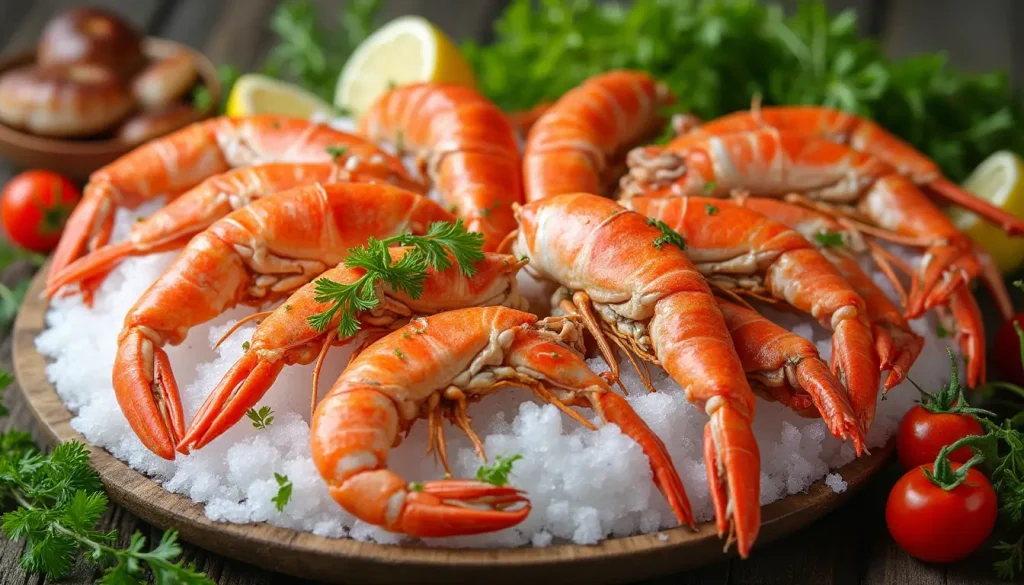
- Choose medium-sized raw shrimp (approximately 1 pound)
- Opt for peeled and deveined shrimp for easier preparation
- Select lump or claw crab meat based on availability
- Consider adding scallops for additional flavor complexity
Getting the seafood right is key. Cut most shrimp into three pieces to ensure even distribution. Keep a few whole for looks. This makes every bite the same.
Pro tip: Always season your seafood before cooking to maximize flavor.
Seasoning is important. Mix:
- Dried parsley flakes
- Paprika
- Salt
- Black pepper
- Cayenne pepper for a subtle kick
If using frozen seafood, thaw it fully and drain well. These steps will make your dressing a hit with your guests.
Creating the Aromatic Vegetable Base
The heart of a great seafood dressing is its aromatic vegetable base. Professional chefs know that the Cajun trinity vegetables are key. They add rich, complex flavors that make your dish stand out.
The Essential Trinity Mix
The Cajun trinity vegetables are the heart of this dish. This mix includes:
- Onions (finely chopped)
- Celery (diced)
- Green bell peppers (carefully minced)
Proper Sautéing Methods
Sautéing aromatics needs precision and patience. Heat your pan with butter or oil until it’s just right. Then add your vegetables. Aim for a deep, golden-brown color to release the most flavor.
“The magic happens when you transform raw vegetables into a flavor-packed base through careful sautéing.” – Chef Kolby Kash
Seasoning Techniques
Seasoning vegetables is an art. It can make or break your seafood dressing. Start with salt and black pepper. Then, add spices that match your seafood.
| Seasoning | Flavor Profile | Recommended Amount |
|---|---|---|
| Kosher Salt | Enhances Natural Flavors | 1-2 tsp |
| Black Pepper | Adds Warmth | 1/2 tsp |
| Garlic Powder | Depth of Flavor | 1/4 tsp |
| Cayenne Pepper | Optional Heat | Pinch |
Pro tip: Add minced garlic during the final minute of sautéing to prevent burning and maximize its aromatic qualities.
Mastering the Seafood Stock Foundation
Making a rich homemade seafood stock is key to a flavorful seafood dressing. Your stock’s quality will make or break the dish. It turns a simple recipe into a coastal culinary masterpiece.
- Collect shrimp and crab shells from recent seafood meals
- Use fresh seafood trimmings for maximum flavor
- Consider stock alternatives if seafood shells are unavailable
“The soul of any great seafood dish lies in its stock” – Gulf Coast Chef Wisdom
Stock alternatives like chicken or vegetable broth can work well. Use about 1 cup of stock, adjusting as needed. The goal is to build layers of flavor that enhance your seafood.
Homemade seafood stock is easy to make but packs a big punch. Simmer shells with onions, celery, and herbs for 30-45 minutes. Strain well to get a clean, pure liquid that boosts your dressing’s taste.
- Pro Tip: Season your stock lightly to maintain versatility
- Strain through a fine-mesh sieve for clarity
- Cool and store in airtight containers
Mastering your seafood stock foundation will make your dressing truly coastal.
Step-by-Step Assembly Process
Making a tasty seafood dressing needs focus and the right mixing skills. The way you put it together is key to a dish that truly feels like a taste of the coast.
Layering Ingredients with Precision
Start with a strong base when making seafood dressing. Layer your ingredients carefully to spread out the flavors:
- Begin with a base of crumbled cornbread
- Gently fold in sautéed vegetables
- Add seasoned seafood components
- Incorporate cream of celery soup
Mastering Mixing Techniques
Mixing stuffing ingredients needs a light touch. Here are some tips to keep the texture just right:
- Stir ingredients gently to prevent compacting
- Use a large mixing bowl for even distribution
- Incorporate stock gradually
- Taste and adjust seasonings
Moisture Control Strategies
Getting the moisture just right is essential for a great seafood dressing. Here are some tips for controlling moisture:
| Moisture Level | Adjustment Technique |
|---|---|
| Too Dry | Add stock 1/4 cup at a time |
| Too Wet | Incorporate additional cornbread crumbs |
| Perfect Consistency | Mixture should hold together without being soggy |
“The secret to an outstanding seafood dressing is balance – in flavors, textures, and moisture.”
The final mix should be moist but not too wet. Mix gently and add stock carefully to impress your guests.
Baking Techniques and Temperature Guidelines
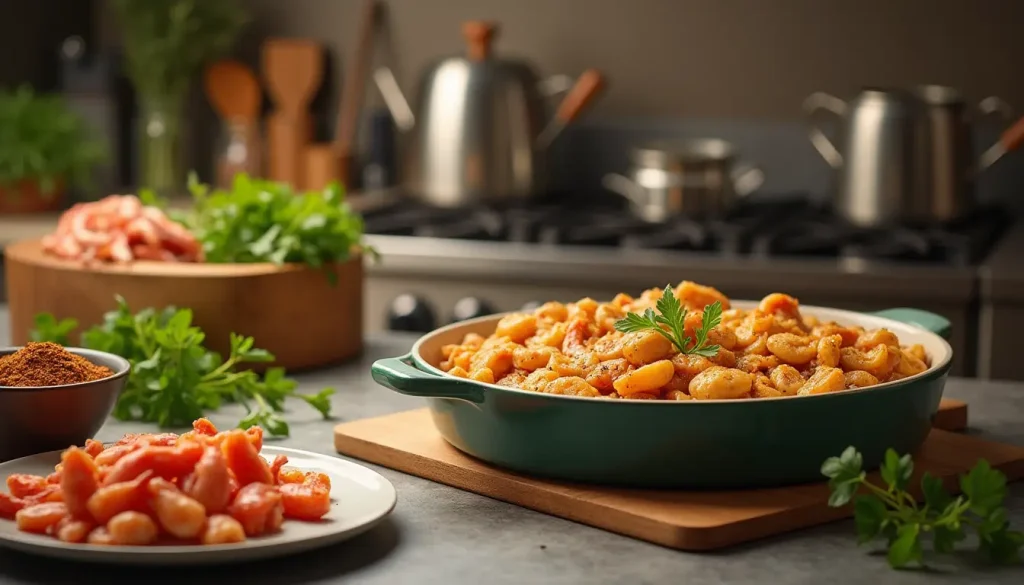
Baking seafood dressing needs precision and care. You aim for a golden-brown top and a fully cooked dish. The best oven temperature for stuffing is about 400°F (200°C). This temperature helps get a crispy outside and a moist inside.
Here are key baking steps for your seafood dressing:
- Preheat the oven to exactly 400°F (200°C)
- Choose an oven-safe dish or cast-iron skillet
- Spread the mixture evenly for even cooking
- Keep an eye on the cooking time
“The secret to perfect seafood dressing is in the baking technique and temperature control.”
Cooking time is usually 25-35 minutes. Look for a golden-brown top to know it’s done. Use a meat thermometer to check the internal temperature. It should be 165°F (74°C) for safety and the best texture.
| Baking Parameter | Recommended Setting |
|---|---|
| Oven Temperature | 400°F (200°C) |
| Cooking Time | 25-35 minutes |
| Internal Temperature | 165°F (74°C) |
| Resting Time | 15 minutes |
After baking, let your seafood dressing rest for 15 minutes. This step lets the flavors blend and the ingredients set. It makes the dish more cohesive and tasty.
Storage and Make-Ahead Instructions
Preparing your seafood dressing ahead of time can save you a lot of stress during holidays. By using smart storing techniques, you can enjoy this tasty dish without last-minute worries.
Here are some tips to keep your seafood dressing fresh and tasty:
- Refrigeration: Store your prepared seafood dressing in an airtight container for up to 2-3 days after preparation
- Freezing instructions recommend keeping the dish frozen for maximum one month
- Always cool the dressing completely before storing to prevent bacterial growth
“Proper storage is the secret to maintaining the perfect texture and flavor of your seafood dressing.” – Coastal Cuisine Expert
When it’s time to serve, follow these reheating tips:
- Thaw frozen dressing overnight in the refrigerator
- Bring to room temperature before reheating
- Reheat in a 350°F oven for 20-25 minutes, covering with foil to prevent drying
Pro tip: For optimal freshness, vacuum-sealing is recommended when freezing your seafood dressing. This method helps preserve flavor and prevents freezer burn.
| Storage Method | Duration | Recommended Action |
|---|---|---|
| Refrigerator | 2-3 days | Store in airtight container |
| Freezer | Up to 1 month | Vacuum-seal if possible |
Remember, proper storage ensures your seafood dressing remains as delicious as the moment you first prepared it!
Conclusion
Your seafood dressing recipe is more than a holiday side dish. It’s a celebration of Southern cuisine that brings families together. This recipe lets you explore coastal flavors and create unforgettable meals.
Mastering this recipe opens up a world of culinary creativity. You’ll learn to make the dish your own, whether for a special event or a simple dinner. Southern cooking is about passion, tradition, and new flavors.
The secret to great seafood dressing is fresh ingredients, careful prep, and a love for trying new things. Every time you make it, you’ll get better and appreciate Southern cooking more. Your kitchen is ready to impress with this recipe.
Enjoy cooking and share your seafood dressing with loved ones. Your culinary adventure is just starting, with endless possibilities ahead.



